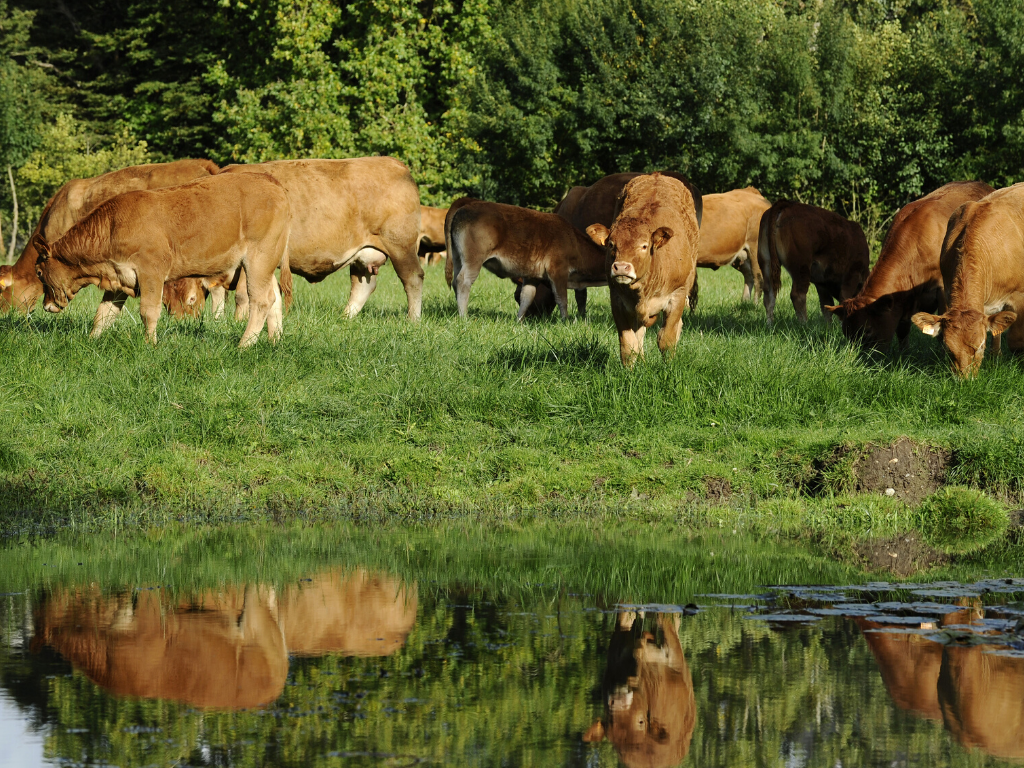
Keeping Cool. The Advantage To Livestock Of A Wilder Landscape.
by Alex Tomlinson
It was a hot midsummer day and my hubby and I were fortunate to be driving around the beautiful Peak District, delivering prescriptions to our elderly and vulnerable locals. I am putting our ‘jolly round the Peaks’ in lockdown context so you don’t think we have been reckless in this time of great sensitivity.
I wanted to share some observations about animal welfare. Marion Dawkins’ definition of animal welfare has two key elements (Dawkins 2017): ‘keeping animals healthy’ and ‘giving them what they want’.
Regenerative agriculture must incorporate both of these to be true to its name. Keeping animals healthy we hope will be a given in a fully regenerative system – ruminants grazing on a diverse and dense sward, not being plagued by excessive numbers of nuisance flies or ticks, not suffering from parasitic disease, or dietary mineral deficiencies. All these issues, by definition, should fall away over time as the complexity of the landscape in its entirety brings health, resilience and dynamism to all.
The other piece of the welfare puzzle is about giving animals what they want. I want to focus on affording animals the opportunity to control their own body temperature, and in particular minimise heat stress.
It is a really hot day as I write this – scorching in fact – with relentless sun, but thankfully a refreshing southerly breeze too. And the ground is really really dry. We all know how we feel on a hot day when we cannot get out of the sun, especially if we are on hard surfaces like concrete or bare earth. It’s really really uncomfortable.
Oh and the relief of moving beneath the cool canopy of a tree, or the delight of walking barefoot on a thick carpet of grass – that is something that is hard to quantify, but I am sure you know what I mean.
Tall grass grazing – as is seen with holistic planned grazing in regenerative systems, provides an environment in which the likelihood of heat stress on hot days is reduced. The pasture canopy shades the soil surface, limiting the amount of heat re-radiating back up, in combination with the cooling effects of transpiration from the leaves. Where the ground is bare, or heavily overgrazed these cooling effects are simply not there.
Sadly there’s not much holistic planned grazing going on around here. Instead, what I did notice, having the luxury of being a passenger, was that virtually all the sheep and cattle had taken to the shade of trees, where they were able to. This is where agroforestry or silvopasture could really be a winner here in the UK. Everyone wins. And didn’t our green and pleasant land used to be just that? – a mix of woods and pasture. Great for land regeneration and great for our livestock.
Alexandra Tomlinson MA Vet MB MSc PhD Dip ECZM (Wildlife Population Health) MRCVS
Wildlife health and veterinary consultant
European Veterinary Specialist Zoological Medicine (Wildlife Population Health)
Dawkins, M. S. 2017. Animal welfare with and without consciousness. Journal of Zoology 301: 1-10. doi:10.1111/jzo.12434.


No Comments